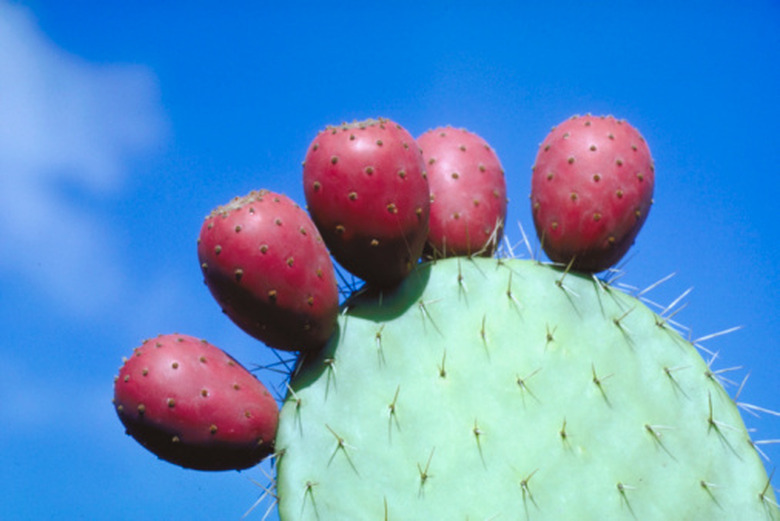Weed Killers That Will Kill Cactus
Cacti (Cactaceae) are succulents native to the deserts of North and South America. The nearly 1,600 different species of cactus are naturalized in all the arid and semiarid regions around the world. The fruit produced by a number of cacti have been in human consumption for more than 9,000 years.
Cacti (Cactaceae) are succulents native to the deserts of North and South America. The nearly 1,600 different species of cactus are naturalized in all the arid and semiarid regions around the world. The fruit produced by a number of cacti have been in human consumption for more than 9,000 years. Cacti are invasive in nature and are often a problem in fields, pastures and rangelands. The use of certain weed killers is effective in cactus control.
Weed Killers
The Texas Cooperative Extension recommends the use of picloram for the control of cacti. The chemical is a systemic herbicide that's effective on a variety of broad-leaved weeds except mustard. Picloram is also widely used for woody plant control. Another weed killer, 2,4-D (known by trade names such as Weedtrine-II, Aqua-Kleen and Barrage) is cited as an excellent control strategy for cacti by the New Mexico State University Extension. A systemic herbicide, 2, 4-D controls a number of broad-leaved weeds as well as aquatic weeds.
- Cacti (Cactaceae) are succulents native to the deserts of North and South America.
- A systemic herbicide, 2, 4-D controls a number of broad-leaved weeds as well as aquatic weeds.
Picloram Use Recommendations
To use picloram herbicide, mix the chemical with water to form a 1 percent solution. For example, the ratio is 4 oz. of picloram in 3 gallons of water, 18 oz. of chemical in 14 gallons of water and 1 qt. of chemical in 25 gallons of water. Also use a surfactant such as a dishwashing liquid as this helps the chemical adhere to the waxy surface of cacti. If the tank size is 3 gallons, use 1 oz. of the surfactant. In a 14-gallon tank, use 5 oz. of surfactant and in a 25-gallon tank use 8 to 16 oz. of the surfactant. Mix in a blue marking dye at the rate of ¼ to ½ percent in a 3-gallon tank as this helps in identifying the areas that have been treated.
- To use picloram herbicide, mix the chemical with water to form a 1 percent solution.
- of surfactant and in a 25-gallon tank use 8 to 16 oz.
2,4-D Use Recommendations
For effective cacti control using 2,4-D, make a solution by mixing one part of the chemical to 20 parts water and three parts diesel oil. This results in 95 to 100 percent control, as cited by the New Mexico State University Extension. A gallon of this mixture is effective on 14 to 20 cacti such as cholla that have a mature height of up to 8 feet.
Application Method
Start spraying the cacti with herbicide solutions at the start of the active growth period and during daytime temperatures of about 60 degrees. Cacti that are in bloom respond best to treatment. Make sure all the pads are thoroughly coated on both sides but don't wet to them the point of runoff. Avoid treatment in windy areas to minimize the risk of drift to desirable plants. Don't spray wet plants.
- For effective cacti control using 2,4-D, make a solution by mixing one part of the chemical to 20 parts water and three parts diesel oil.
- A gallon of this mixture is effective on 14 to 20 cacti such as cholla that have a mature height of up to 8 feet.
References
- "Cacti"; Park S. Nobel; 2002
- New Mexico State University Extension; Control Cholla Cactus; Kirk McDaniel; February 2009
